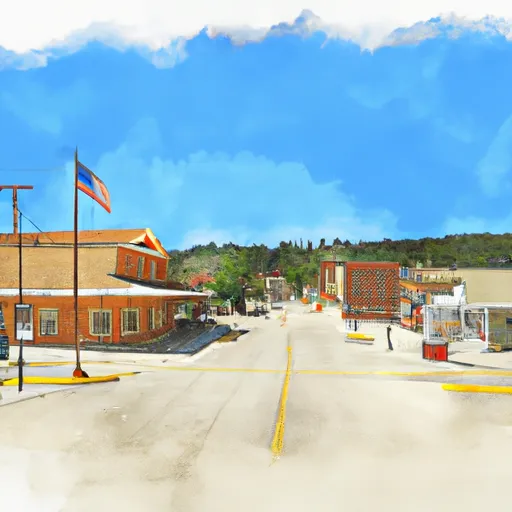-
 Snoflo Premium
Snoflo Premium
Get unlimited access to all our content
With no Ad interruptions! - Start Your Free Trial Login with existing account
Mc-Allister
Eden Index
Climate
7.5
•
Recreation
3.0
•
Community
•
Safeguard
4.0/10

McAllister, Montana is a small and charming community nestled in the picturesque Madison Valley. Known for its stunning natural beauty, McAllister experiences a continental climate with cold winters and warm summers. Winters are typically snowy, ideal for activities like skiing and snowboarding, while summers are pleasantly mild, making it a great time to explore the outdoors.
Hydrologically, McAllister is located in close proximity to several water bodies. The Madison River flows nearby, offering excellent opportunities for fishing and rafting. Enthusiasts can enjoy casting a line in search of trout or embarking on exhilarating whitewater adventures. Additionally, the nearby Ennis Lake provides a serene setting for boating, kayaking, and swimming during the warmer months.
Outdoor recreation opportunities in McAllister are abundant throughout the year. The surrounding mountains offer extensive hiking trails, allowing visitors to immerse themselves in the breathtaking landscapes. Hunting is also popular in the area, with opportunities to pursue deer, elk, and other game. Furthermore, the nearby Big Sky Resort provides world-class skiing and snowboarding facilities during the winter season.
Overall, McAllister, Montana offers a delightful blend of diverse climate, enticing hydrological features, and ample opportunities for outdoor recreation.
What is the Eden Index?
The Snoflo Eden Index serves as a comprehensive rating system for regions, evaluating their desirability through a holistic assessment of climate health, outdoor recreation opportunities, and natural disaster risk, acknowledging the profound impact of these factors on livability and well-being.
Climate Health Indicator (CHI): 7.5
Mc-Allister receives approximately
401mm of rain per year,
with humidity levels near 63%
and air temperatures averaging around
7°C.
Mc-Allister has a plant hardyness factor of
5, meaning
plants and agriculture in this region thrive during a short period during spring and early summer. Most
plants will die off during the colder winter months.
By considering the ideal temperature range, reliable water supplies, clean air, and stable seasonal rain or snowpacks, the Climate Health Indicator (CHI) underscores the significance of a healthy climate as the foundation for quality living.
A healthy climate is paramount for ensuring a high quality of life and livability in a region, fostering both physical well-being and environmental harmony. This can be characterized by ideal temperatures, reliable access to water supplies, clean air, and consistent seasonal rain or snowpacks.
Weather Forecast
Streamflow Conditions
Missouri Headwaters
Area Rivers
Missouri Headwaters
Snowpack Depths
Missouri Headwaters
Reservoir Storage Capacity
Missouri Headwaters
Groundwater Levels
Recreational Opportunity Index (ROI): 3.0
The Recreational Opportunity Index (ROI) recognizes the value of outdoor recreational options, such as parks, hiking trails, camping sites, and fishing spots, while acknowledging that climate plays a pivotal role in ensuring the comfort and consistency of these experiences.
Access to outdoor recreational opportunities, encompassing activities such as parks, hiking, camping, and fishing, is crucial for overall well-being, and the climate plays a pivotal role in enabling and enhancing these experiences, ensuring that individuals can engage in nature-based activities comfortably and consistently.
Camping Areas
| Campground | Campsites | Reservations | Toilets | Showers | Elevation |
|---|---|---|---|---|---|
| Potosi | 14 | 6,232 ft | |||
| West Fork Madison | 6 | 5,881 ft | |||
| Madison River | 10 | 5,896 ft | |||
| Harrison Lake FAS | 12 | 4,743 ft | |||
| Lewis and Clark Caverns State Park | 40 | 4,270 ft |
Nearby Ski Areas
Catastrophe Safeguard Index (CSI):
The Catastrophe Safeguard Index (CSI) recognizes that natural disaster risk, encompassing floods, fires, hurricanes, and tornadoes, can drastically affect safety and the overall appeal of an area.
The level of natural disaster risk in a region significantly affects safety and the overall livability, with climate change amplifying these risks by potentially increasing the frequency and intensity of events like floods, fires, hurricanes, and tornadoes, thereby posing substantial challenges to community resilience and well-being.
Community Resilience Indicator (CRI):
The Community Resilience Indicator (CRI) recognizes that education, healthcare, and socioeconomics are crucial to the well-being of a region. The CRI acknowledges the profound impact of these elements on residents' overall quality of life. By evaluating educational resources, healthcare accessibility, and economic inclusivity, the index captures the essential aspects that contribute to a thriving community, fostering resident satisfaction, equity, and social cohesion.

